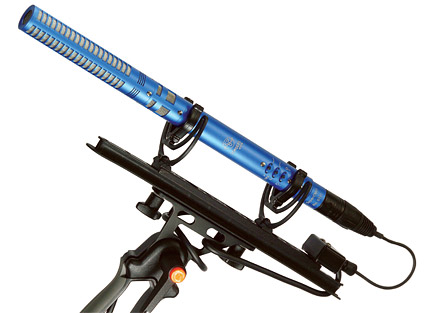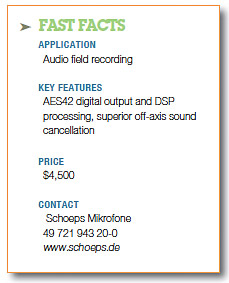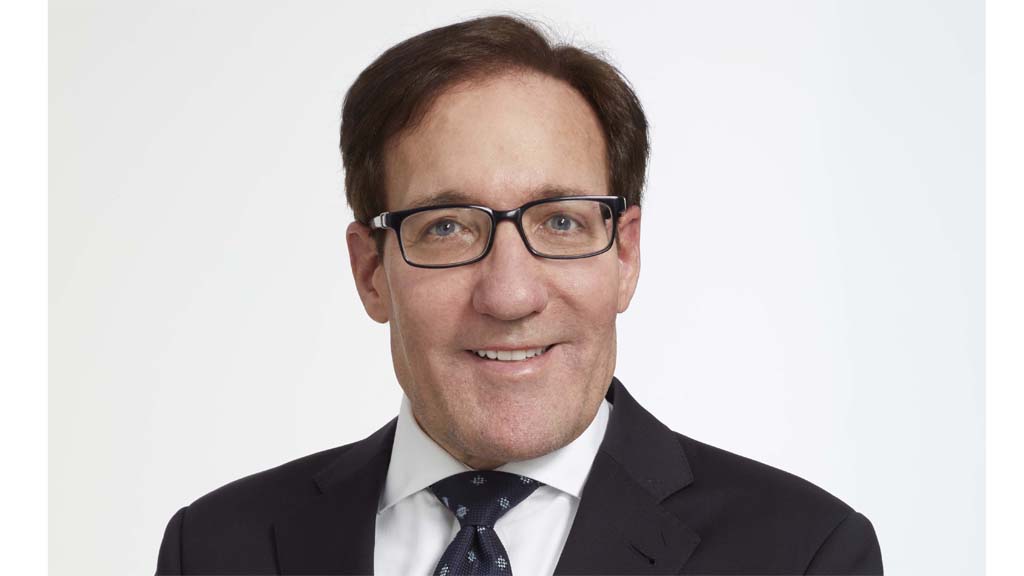Schoeps SuperCMIT 2U Digital Shotgun Microphone

The Schoeps SuperCMIT 2U Shotgun Microphone
I recently saw the unmistakable Schoeps blue shotgun on TV during some media circus press event. It was probably the earlier analog version, but the point is, since no other mic has this blue metallic finish, Schoeps gets "recognition points" for daring to go beyond gray or black. Actually, putting out a shotgun microphone of any color was something that Schoeps had not considered until they received solid and continuous input from the U.S. market that one would be well received. That's how the first CMIT came to be.
In another daring move, Schoeps has recently released the SuperCMIT digital shotgun microphone with a two-position, DSP circuit that tightens the pattern and lowers ambient noise. And while Schoeps wasn't the first company with a digital microphone—that honor went to Beyerdynamic and their MCD100 more than a decade ago—there have been only a few other digital mics makng it to the market in the intervening years, and only Neumann has previously taken a serious crack at digital or DSP-powered mics.
FEATURES
The Schoeps SuperCMIT provides both AES42 digital output signals and DSP processing. It also has two simultaneous outputs. One of these is the unaltered output of the main capsule; the other is the audio after DSP processing. There's also a two-position switch that engages either of two presets. Preset 1 provides a more narrow pattern than the unprocessed pattern. Preset 2 is more aggressive, but is useful in situations where the ambient noise is so loud that, regardless of fidelity, digging any audio out is a challenge.
In addition to the two DSP presets, the SuperCMIT also has two switchable EQ filters: a +5 dB at 10 kHz boost to compensate for windscreen losses and a steep 18 dB/octave low-cut filter to reduce low-frequency wind and boom noise below 80 Hz.
There are some caveats as you step through the digital mic doorway. In a digital word, you need a source with an internal clock. The SuperCMIT has that. If you use more than one SuperCMIT, or want to use another clock source, sample rate converters must be used. Unless your gear has an AES42 input, you'll need to convert its output to a more typical AES3 input with sample rate conversion. The Schoeps PSD 2U module does that and also provides the 10 Volts of digital phantom power (DPP) required to power the mic. An AC adaptor is included with the PSD 2U, or it can be powered by an external DC supply. The Sound Devices 788T digital mixer/recorder has both DPP and AES42 inputs. The Zaxcom Deva and Aaton Cantar currently have sample rate conversion, but require DPP.
You may consider digital mics and AES42 fringey, leading edge technology, but the field is quickly growing. Other gear supporting the AES42 input include the AETA 4MinX, TASCAM HS-P82 (no DPP), RME DMC-842, Lake People DAC C462, Neumann DMI-2 and Zaxcom TRX942. If you have no digital inputs, the Schoeps Mini-DA42 module supplies power and converts the AES42 output of the mic to AES3 and to two XLR balanced analog outputs. As with the PSD 2U, an AC adaptor with Hirose plug is included, but you can also power the unit by battery in the field.
So, how does this DSP work?
Quite well, actually.
There's a second diaphragm that faces to the rear, behind the primary diaphragm. This rear-facing diaphragm senses the off-axis sounds. The two signals are combined in a time and frequency-dependent way to cancel sounds mostly below 5 to 6 kHz in the diffuse field. If you saw any of the World Cup broadcasts in 2010, a lot of the sidelines mics were SuperCMIT. (It may be time to think about retiring your parabolic mics.)
IN USE
To replicate a video shoot in a normal interior, I first tried the SuperCMIT in my living room at typical dialog boom distances, eight inches to a foot above my head. Listening to both the straight and DSP-filtered versions is somewhat problematic if you're listening to your own voice due to latency created by A to D conversion and processing. I routed the mic to the Schoeps PSD 2U for DPP and took the AES3 output directly into my Sound Devices 744T. One track recorded the "straight" signal from the SuperCMIT, a second track recorded the DSP-processed output. On a third track I recorded a Sennheiser MHK416.
After transferring the tracks to Pro Tools for a close listen, I noticed a timing difference between the tracks. The Schoeps tracks were a little late due to analog-to-digital conversion and DSP processing. The unprocessed SuperCMIT track sounded less aggressive and more natural than the MKH416; much like the sound I get from my Schoeps CMC641.
Rejection of distant sound was noticeably different between the SuperCMIT and the MKH416, and not exactly as I expected. I had matched the levels of the mics, but the MKH 416 was brighter than the Schoeps. I had both mics on boom stands in my cathedral-ceilinged living room. The windows were open and birds and the relative quiet of a suburban neighborhood were audible. A light rail train passed in the distance, and switching back and forth among the three tracks in post, I found both the Schoeps regular track and Preset One rejected the birds and train better than the 416. During this test, there wasn't a noticeable difference between the two Schoeps tracks.
While set up in the living room, I opened the doors of the refrigerator/freezer in the next room. When the compressor kicked in the fan noise was much more audible on the MKH 416 than either track of the SuperCMIT. Both Schoeps capsules generated a slight amount of HF hiss relative to the MKH 416, but I had to be listening in very quiet ambience to hear it. I don't know if this was normal or due to the trip through the PSD 2U box.
I left the 416 inside and headed out as I heard a mowing service enter the neighborhood. Three or four large, gas-powered mowers, trimmers and blowers make a great diffuse noise source. They were 30 to 40 feet away. In this assault, the differences of the two Schoeps became more audible. Preset 2 did a better job of digging me out of the noise, but there were audible artifacts that sounded like a wide spectrum expander or gate that closed down around the edges of my voice. The artifacts weren't as audible with Preset One, but my voice was buried deeper in the mower noise.
SUMMARY
You might not win any audio purity awards with Preset 2, but it might be the perfect tool for a media circus or sporting event. If you have a problem with a four ounce, $4,500 mic, perhaps consider that you're getting two mics and a noise reduction system. The nice thing about the SuperCMIT is that you get two separate outputs, straight and your choice of DSP. So, if you find either of the presets too severe, you can apply your favorite flavor of noise reduction in post to the straight track. That's a win-win situation.
Ty Ford has been reviewing pro audio gear for more than 20 years. He may be contacted through www.tyford.com.

The professional video industry's #1 source for news, trends and product and tech information. Sign up below.
